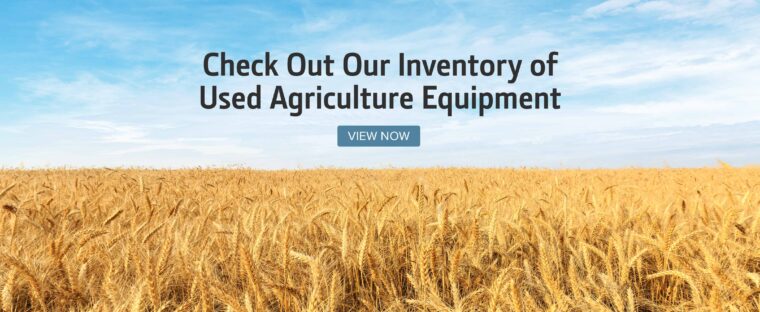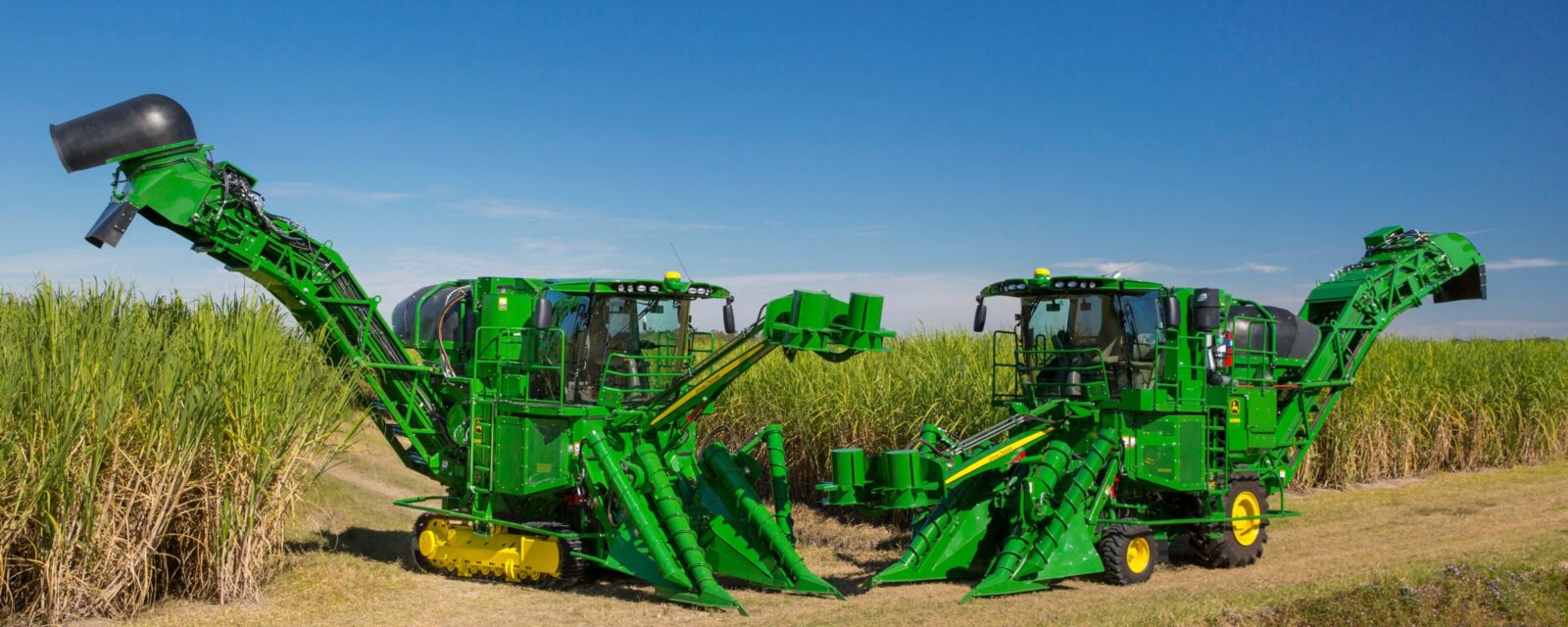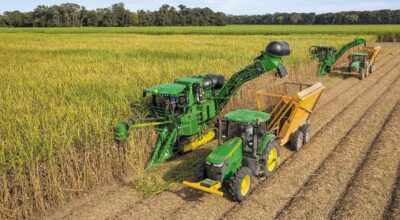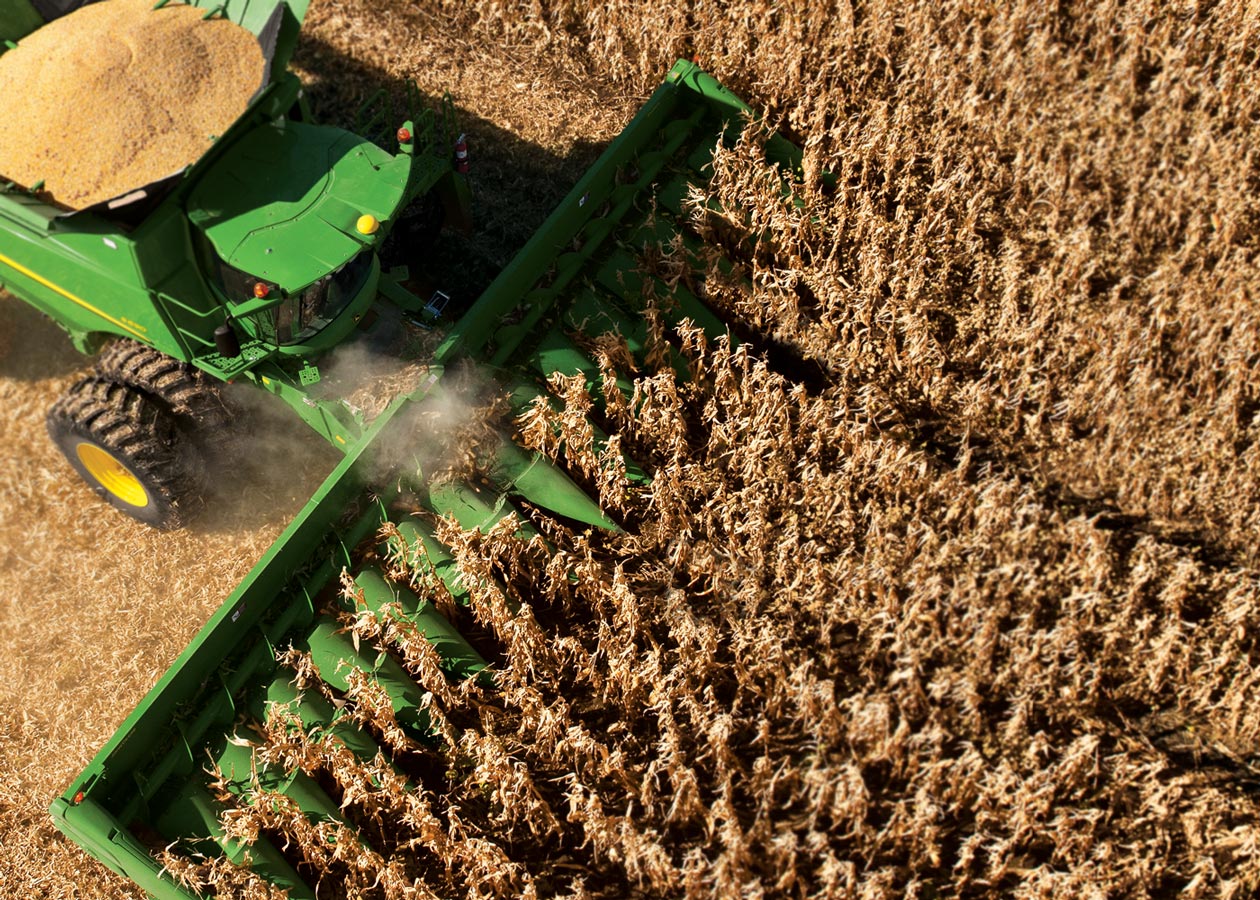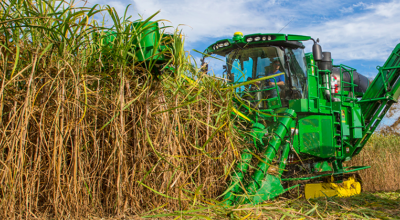Sugar cane harvest is a high-stakes season where every hour counts. In states like Louisiana, Florida, and Texas, where sugar cane drives local economies, a well-timed harvest can make the difference between strong yields and costly losses.
When cane sits too long, sugar content drops. But when equipment is pushed too hard, repairs and downtime cut into valuable field time.
The right harvester keeps billets clean, trucks moving, and operating costs in check. This guide compares John Deere’s CH570, CH950, and CH960 models to help you choose the machine that will deliver the best results for your fields and your harvest goals.
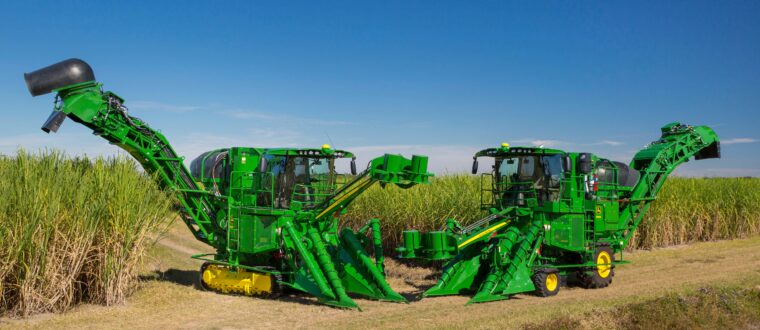
Key Takeaways
- The right sugar cane harvester depends on matching equipment to field size, row spacing, and overall harvest demands.
- The CH570 offers single-row versatility, the CH950 adds two-row efficiency, and the CH960 delivers high-capacity performance for larger fields.
- Understanding the differences helps growers work more efficiently, protect crop quality, and control harvest costs.
Overview of John Deere Sugar Cane Harvesters
All three John Deere sugar cane harvesters — CH570, CH950, and CH960 — share core technologies designed to maximize harvest efficiency and protect crop quality. Across the lineup, these models include several key features:
- The industry-exclusive Harvest Monitor™ system tracks yield, trash content, and fuel use in real time, giving operators clear insight into performance with every pass and valuable data for post-harvest planning.
- SmartClean™ technology lets operators fine-tune extractor fan speed to balance cane cleanliness with reduced billet loss.
- Floating crop dividers and contour basecutter height control limit soil intake and stubble damage for stronger ratoon crops.
- Externally timed chopper systems simplify maintenance and minimize downtime during critical harvest windows.
While these features set a strong foundation across the lineup, each model also brings unique advantages that make it better suited for specific field sizes, conditions, and harvest demands.
John Deere CH570
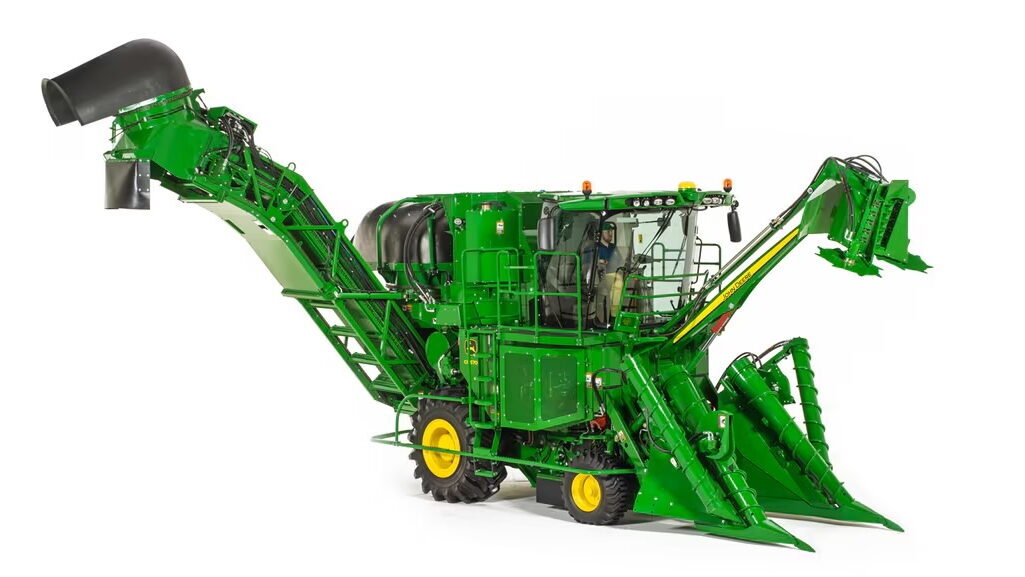
- High efficiency: The precision front end is designed to pull cane smoothly, reducing billet loss and soil intake for cleaner loads.
- Durability options: Add-ons like a shredder topper or XWear™ prolonged-life components help manage residue and cut down on maintenance.
- Compact versatility: Its balanced frame and single-row design make it easier to maneuver in smaller or uneven fields where space and terrain are challenging.
John Deere CH950 & John Deere CH960
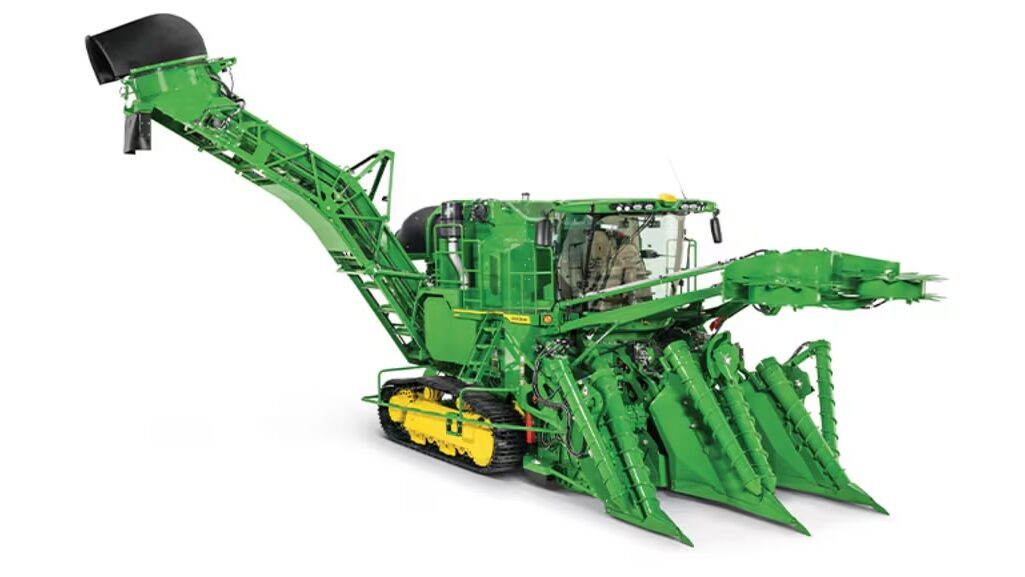
The CH950 and CH960 make up John Deere’s CH9 Series — a two-row lineup built for high-output harvesting. Both models share a suite of advanced features designed to improve productivity, reduce billet loss, and deliver cleaner cane to the mill.
- Two-row productivity: Each model harvests two rows at once, doubling output compared to single-row harvesters.
- Advanced cleaning system: A wider extractor and optimized chopper design remove more trash while protecting billets for higher cane quality.
- RowAdapt™ technology: Independent basecutter height control automatically adjusts to changing terrain and row profiles for smoother operation.
- Controlled Traffic design: Wheel tread matches row spacing to reduce soil compaction and preserve long-term field health.
- High-throughput performance: Built for nonstop harvesting, both models maintain steady cane flow to help growers cover more acres per day.
The main difference between the CH950 and CH960 comes down to row spacing. The CH950 is built for fields with rows spaced 4 ft. 7 in. to 4 ft. 11 in. apart, while the CH960 is optimized for larger-scale operations with wider rows between 5 ft. 7 in. and 6 ft. 3 in.
Comparing the CH570, CH950, and CH960
| Features | CH570 | CH950 | CH960 |
| Horsepower | 337 HP | 485 HP | 485 HP |
| Capacity | 160 gal. (605 L) | 300 gal. (1135 L) | 300 gal. (1135 L) |
| Engine | 9.0 L PowerTech™ Plus Engine | 13.6 L PowerTech™ Engine | 13.6 L PowerTech™ Engine |
| Standard blade configuration | 8 blade (4 per drum), differential | 10 blade (5 per drum), differential | 10 blade (5 per drum), differential |
| Row configuration | Single-row | Two-row | Two-row |
| Ideal field size | Best suited for small to medium fields with a single-row layout | Best suited for moderate to large fields with two-row harvesting | Best suited for large, uniform fields with wide-row spacings |
| Ideal row spacing | N/A | 4 ft. 7 in. to 4 ft. 11 in. | 5 ft. 7 in. to 6 ft. 3 in. |
Why Choosing the Right Sugar Cane Harvester Matters
Choosing the right sugar cane harvester is critical to maximizing yield and minimizing operational costs.
An undersized machine struggles to keep pace, adding more hours in the field and driving labor costs higher. On the other hand, oversizing equipment for a small operation wastes fuel, compacts soil, and leads to unnecessary wear.
By contrast, the right model improves crop quality. Machines equipped with effective cleaning systems send more billets and less trash to the mill, while precise basecutter height control protects ratoon crops for healthier regrowth.
Together, these factors reduce penalties, limit downtime, and help ensure fields are ready for the next season.
Selecting the right equipment is ultimately an investment in margins. Matching equipment to field size and conditions keeps costs predictable and protects long-term productivity, allowing growers to focus on getting the most value out of every acre.
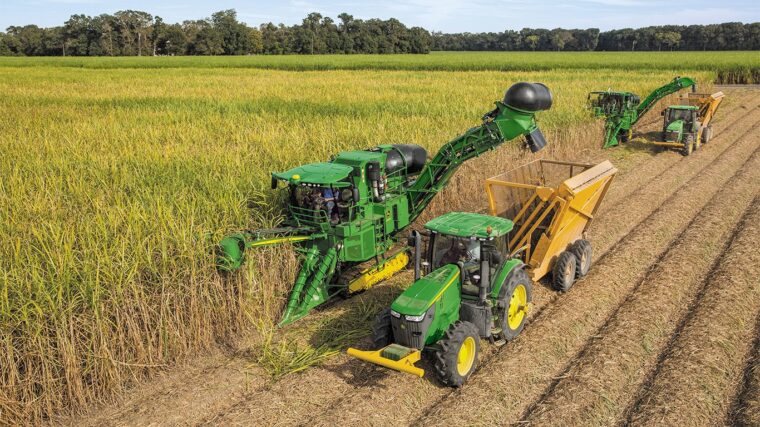
Find John Deere Sugar Cane Harvesters on MachineFinder
The right harvester can turn a demanding season into a steady, efficient operation. John Deere’s CH570, CH950, and CH960 each bring distinct strengths, helping growers find equipment built for their acres and harvest needs.
Ready to turn more cane into cleaner loads this season? Visit your local John Deere dealer or explore available models on MachineFinder to find the harvester built for your operation.
